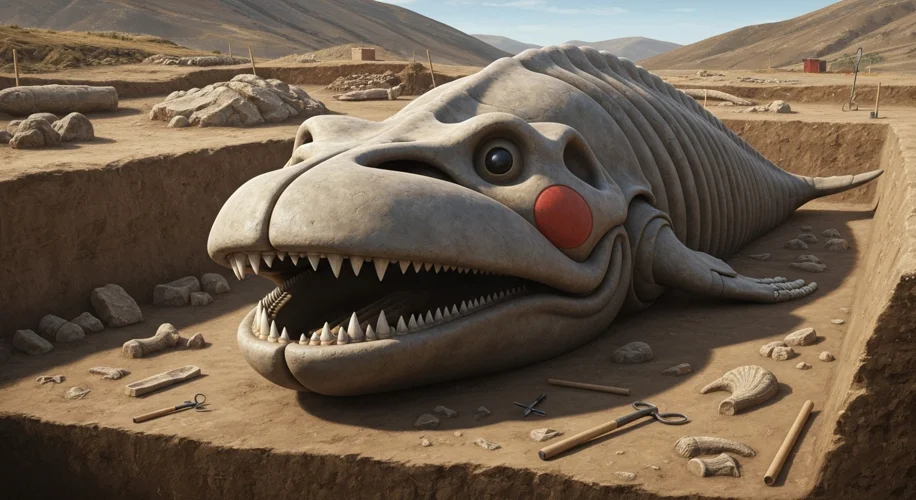Did you know that scientists recently unearthed a truly remarkable fossil? It’s an ancient whale, and it’s got a face that looks uncannily like a beloved cartoon character – think Pikachu! But don’t let that cute comparison fool you; this prehistoric giant also possessed a truly formidable bite.
This fascinating discovery dives deep into the world of paleontology, giving us a unique glimpse into the evolutionary adaptations of marine life millions of years ago. Fossils are like nature’s time capsules, and this particular one is opening up a whole new chapter on ancient cetaceans.
What Makes This Whale So Special?
The whale’s skull, discovered in Peru, is remarkably well-preserved. The arrangement of its jawbones and the shape of its snout give it a distinct, almost rounded appearance, which many have likened to the popular Pokémon character, Pikachu. It’s a delightful surprise when science and pop culture collide, making complex evolutionary concepts more accessible and, dare I say, fun!
But as I mentioned, this whale was no gentle giant. Its powerful jaws were equipped with large, conical teeth. Scientists believe these teeth were used for grasping and holding prey, rather than tearing or chewing. This suggests a hunting strategy that involved overpowering its meals before swallowing them whole. Imagine a creature that looks a bit like a cuddly character but could likely take down sizable prey!
Evolution in Action
This discovery is a fantastic example of how species adapt to their environments over vast periods. The whale’s facial structure and dentition tell a story about its diet and hunting grounds. It helps us understand the ecological niches ancient marine predators occupied and how they interacted with other life forms in their ecosystem.
For me, it’s always inspiring to see how life on Earth has evolved. Each fossil find, like this ‘Pokémon face’ whale, adds another piece to the puzzle of our planet’s history. It reminds us that evolution is a continuous process, shaped by pressures we can only infer from these incredible remnants of the past.
The Process of Discovery
Unearthing such a specimen is a meticulous process. Paleontologists carefully excavate fossils, often working in challenging conditions. Once recovered, the fossils undergo detailed study, including CT scans and comparative anatomy, to understand their form, function, and place in evolutionary history. It’s a testament to the dedication and skill of scientists that we can learn so much from these ancient bones.
This ancient whale is a vivid reminder of the incredible diversity of life that has existed on Earth. It’s a story of adaptation, survival, and the sheer wonder of the natural world. Science continues to surprise us, and I, for one, can’t wait to see what other incredible discoveries are waiting to be found!

